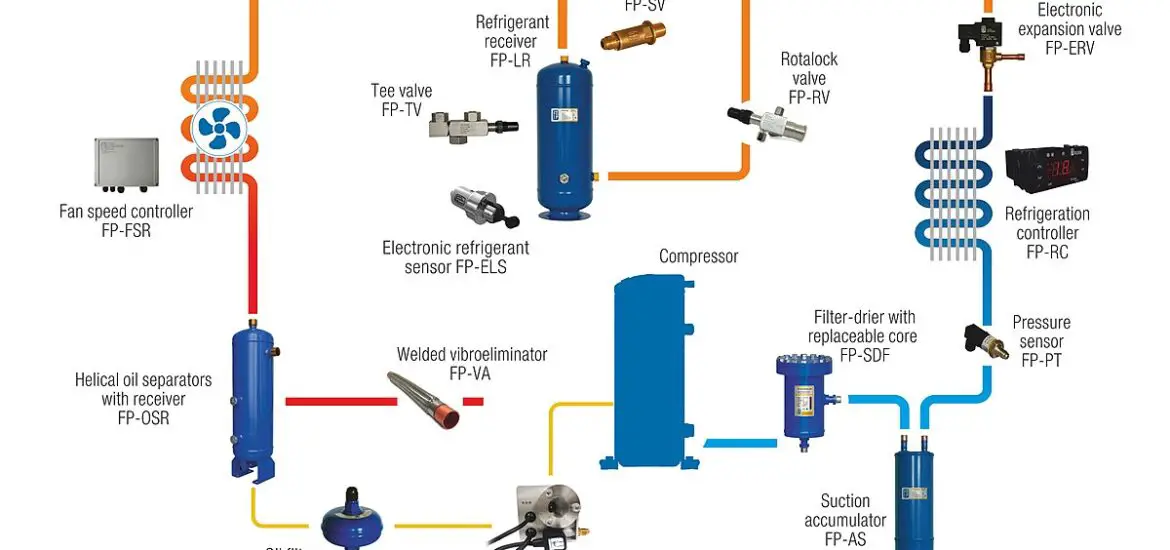Identifying and rectifying issues with the electronic expansion valve can be straightforward with the right guidance. This article will provide a detailed, step-by-step guide to electronic expansion valve troubleshooting.

Table of Contents
Electronic Expansion Valve Out of Range
When we say the electronic expansion valve is “out of range”, we mean that it’s not functioning within the normal parameters set by the manufacturer. This can manifest as inefficiencies in cooling or even system malfunctions. Essentially, it’s like having a tap that doesn’t regulate water flow correctly – it can either trickle out too slowly or gush out too fast.
Steps to Troubleshoot:
Inspect for Physical Damage: Start by visually examining the valve. Think of it like checking a garden hose for any visible holes or tears. If the valve shows signs of wear, cracks, or any damage, this might be causing its erratic behavior.
Check Electrical Connections: This is akin to ensuring a plug is correctly and securely inserted into a socket. If there are any loose wires or if something looks amiss, it could be the reason the valve is acting up. Secure all connections and replace any visibly damaged wires.
Test Valve Coil: The coil is like the valve’s “motor”. Using a tool called a multimeter, you can check if this “motor” is functioning as it should. If the readings are not in line with what the manufacturer states they should be, the coil might be defective.
You can get this KAIWEETS Digital Multimeter from Amazon if you don’t have one.
Verify Refrigerant Levels: Refrigerant is the substance that circulates through your HVAC system, and it’s crucial for cooling. If there’s too much or too little, it’s like having too much or too little water in a radiator. Check these levels and adjust as necessary.
Consult the Manufacturer’s Manual: Every device usually comes with a guide from the maker, detailing common issues and how to solve them. Always check this manual for tailored advice related to the specific model of your valve.
Check out these other related articles…
Expansion Valve Types: Your Comprehensive Guide
Expansion Valve in Refrigerator: Your Easy 101 Guide
Expansion Valve Function: Easy 101 Guide
Expansion Valve Chiller: Your Quick 101 Guide
How Does an Expansion Valve Work: Your Easy 101 Guide
Valve Not Opening or Closing Properly
This is a straightforward issue but can have a profound impact on your system. If the electronic expansion valve doesn’t open or close as it should, it affects the refrigerant’s flow. Picture a door that won’t fully close or open – it’s either going to let in too much cold air or not enough.
Steps to Troubleshoot:
Check for Debris: Sometimes, small particles or foreign objects can get trapped, obstructing the valve’s movement. It’s akin to a tiny pebble preventing a door from closing. Ensure the valve is clean and free from any obstructions.
Verify the Power Supply: It’s essential to make sure the valve is getting the right amount of electricity. Using a multimeter, check that the power levels match what’s recommended. It’s like ensuring a device has the right batteries to operate.
Examine the Controller: The controller is like the brain of the operation. It tells the valve when to open or close. If it’s malfunctioning or sending wrong signals, the valve will not operate correctly. Check it for signs of wear, damage, or malfunctions.
Seek Professional Help: Sometimes, despite our best efforts, it’s hard to pinpoint the problem. In such cases, it’s wise to consult an expert who has the tools and expertise to diagnose and fix the issue. It’s like calling in a plumber when a DIY fix doesn’t stop a leak.
